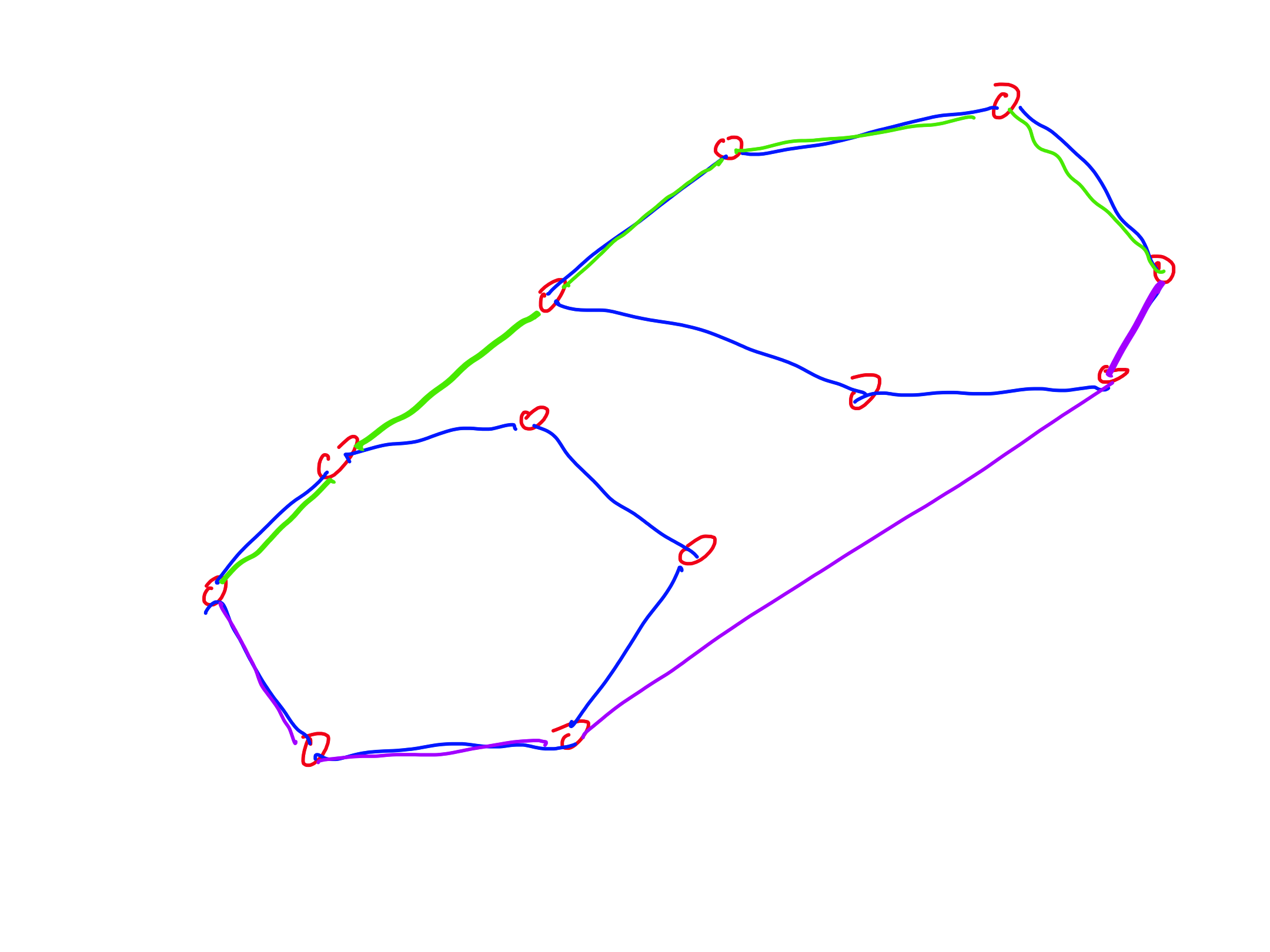Computational Geometry
Computational geometry - Tutorial 21.4.2021
Convexity
Exercise 1
Describe a data structure for storing a convex polygon $P$ which allows us to find out in $O(\log n)$ time whether a query point is contained in $P$. The data structure should be constructed in linear time.
Data structure:
- the structure itself
- construction algorithm
- query algorithm
Structure: array
Construction:
- pick a vertex $u$ and add segments $uv$ to each vertex $v \ne u$ in order to the array ($O(n)$ time)
Query for a point $p$ (assume clockwise orientation):
- perform a bisection to determine two neighboring segments $uv, uw$ in the array such that $p$ lies between them (i.e., $uvp$ is a right turn and $uwp$ is a left turn) ($O(\log n)$ time)
- if $p$ is before the first or after the last segment, then we return
False - otherwise, if $vwp$ is a right turn, return
True, if it is a left turn, returnFalse

Exercise 2
We are given two convex polygons $P, Q$. Describe a linear time algorithm which computes $\operatorname{CH}(P \cup Q)$. You may assume that $P$ and $Q$ are disjoint.
- determine the upper and lower paths of $P$ and $Q$ ($O(n)$)
- merge the two upper paths and the two lower paths ($O(n)$)
- perform the incremental algorithm on the two paths ($O(n)$)
This also works if the polygons are not disjoint!

Exercise 3
We are given a convex polygon $P$ as an array of vertices $p[1, \dots ,n]$.
- Describe an $O(\log n)$ algorithm which finds the highest vertex of $P$.
- Describe an $O(\log n)$ algorithm which finds both tangents of the polygon $P$ through a given point $p \in \mathbb{R}^2 \setminus P$.
- Describe an $O(\log n)$ algorithm which finds the intersection of $P$ and a given line $\ell$.
- Describe an $O(\log n)$ algorithm which finds the point of $P$ which is closest to the given line $\ell$.

-
def highestPoint(p): n = len(p) def rising(i): return p[(i+1) % n].y > p[i].y i, j = 0, n-1 if rising(j) and not rising(i): return p[i] while j - i > 1: h = (i+j) // 2 if rising(i): if not rising(h) or p[h].y < p[i].y: j = h else: i = h else: if rising(h) or p[h].y < p[i].y: i = h else: j = h if p[i].y > p[j].y: return p[i] else: return p[j] - Do the bisection:
- If both neighboring vertices lie on the same side of the line, then the line is a tangent.
- Otherwise, move according to whether the previous or the next point lies above the line.
- Do this for each tangent separately.
